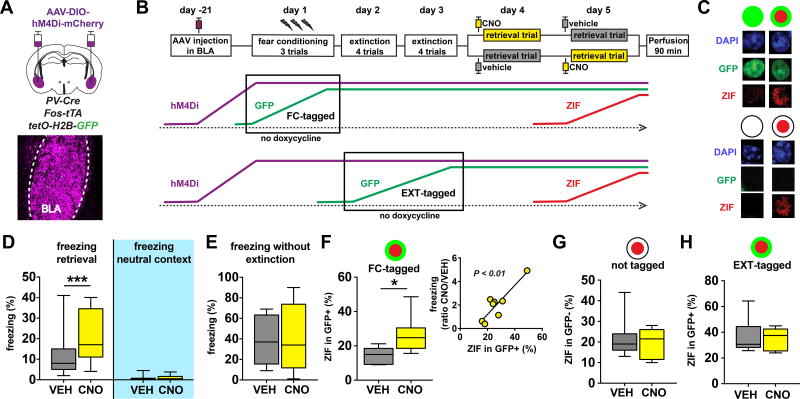Figure 1. BLA PV interneurons selectively suppress conditioned fear behavior and neuronal ensembles following extinction.
A) Bilateral infusion of AAV-Syn-DIO-hM4Di-mCherry into the BLA of PV-Cre:Fos-tTa:tetO-Hist1H2B-GFP (PV-Cre:TetTag) mice was used to selectively express DREADD receptors in BLA PV-interneurons. B) Mice were subjected to contextual fear conditioning, extinction, and retrieval. Cells active during the no doxycycline period are tagged with long-lasting H2B-GFP expression as a result of Fos-promoter driven tTA expression, which enables tTA protein to bind and activate the tetO-H2B-GFP transgene. This binding is prevented in the presence of doxycycline. Cells active during the retrieval trial express short-lasting Zif268 (ZIF) protein that can be detected in brains perfused 90 minutes later. PV-Cre:TetTag mice were without doxycycline chow during either the fear conditioning trials or during the extinction trials, resulting in FC-tagged and EXT-tagged neurons, respectively. For the EXT-tagged experiment, extinction and retrieval was done on days 4–7 instead of days 2–5 to enable clearance of doxycycline on days 3–4. C) Examples of GFP+/GFP- and ZIF+/ZIF-nuclei in the BLA of TetTag mice. D–E) Silencing BLA PV-interneurons results in a selective increase in conditioned fear following extinction. Mice injected with CNO 30 min prior to retrieval displayed increased freezing in the conditioned context (D left, Wilcoxon matched-pairs: W = 338, P < 0.0001, n = 29 mice), but not in a neutral context that was never paired with footshock (D right, Wilcoxon matched-pairs: W = 9, P = 0.6563, n = 9 mice). Mice injected with CNO 30 min prior to a retrieval trial that was not preceded by extinction trials did not show altered freezing levels in the conditioned context (E, Wilcoxon matched-pairs: W = −1, P = 0.9824, n = 12 mice). F–H) Silencing PV interneurons selectively disinhibits the BLA fear ensemble. Injection of CNO 30 min prior to retrieval leads to an increase in the percentage of ZIF+ cells among the FC-tagged GFP+ neurons (F left panel, unpaired t-test: t(13) = 2.86, P = 0.0134, VEH n = 7 mice, CNO n = 8 mice). The percentage reactivated GFP+ cells correlated with the behavioral effect of CNO (F right panel, linear regression: F(1,6) = 23.42, P = 0.0029, n = 8 mice). Injection of CNO had no effect on GFP− neurons that were not tagged during fear conditioning (G, Mann-Whitney test: U = 27, P = 0.9333, VEH n = 7 mice, CNO n = 8 mice), or on EXT-tagged GFP+ neurons (H, unpaired t-test: t(10) = 0.4142, P = 0.6875, VEH n = 7, CNO n = 5). All box plot graphs show median (line inside box), 25% and 75% percentiles (box edges), and minimum and maximum values (error bars).

